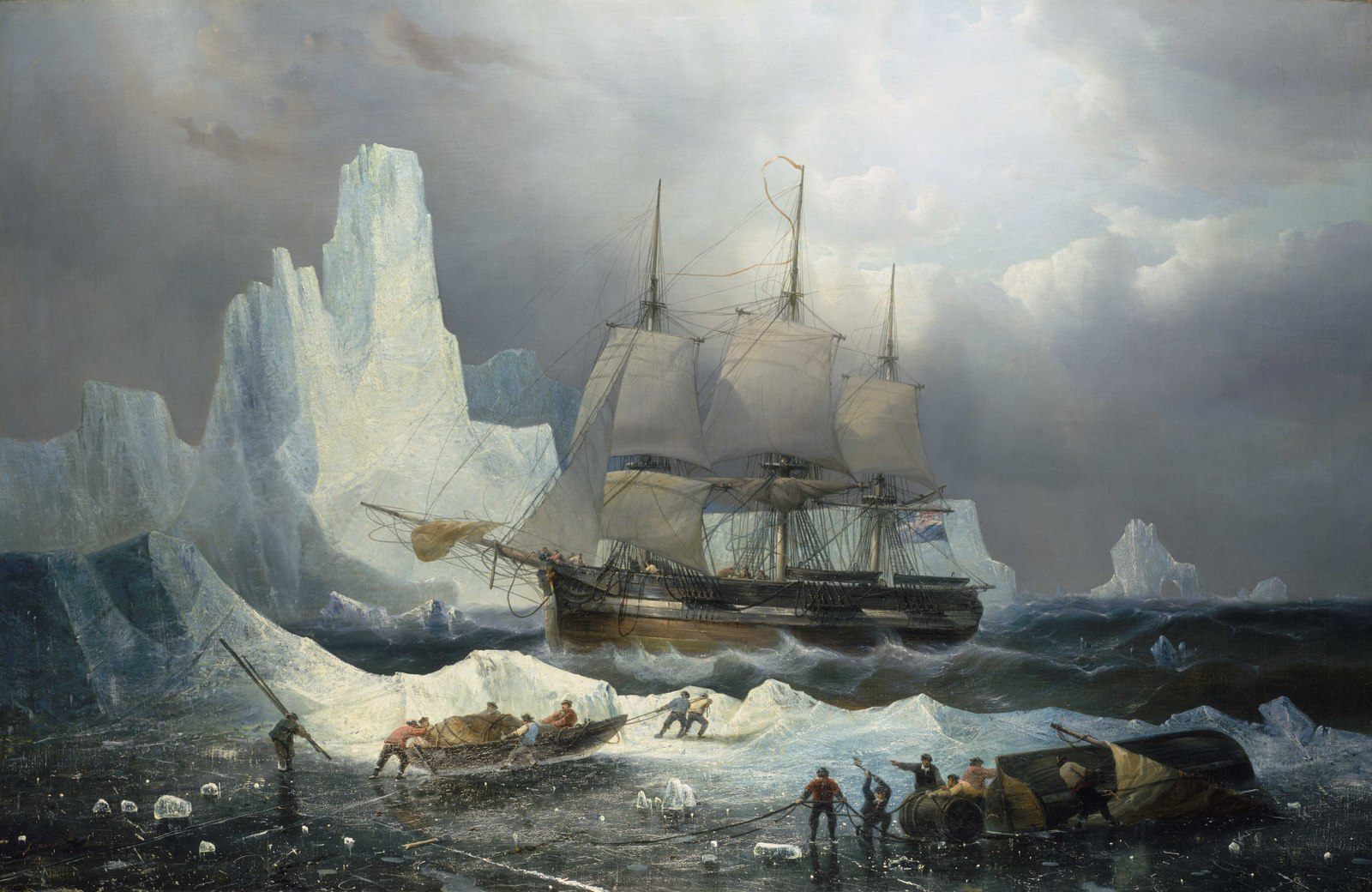For over two years, both the HMS Terror and HMS Erebus (Greek mythology’s personification of death) remained encased in ice near the top of the world. Amid frigid Arctic conditions, dwindling rations, and no hope in sight, the surviving crew of Sir John Franklin’s ill-fated 1845 expedition to chart a Northwest Passage to China finally abandoned their two ships on April 26, 1848. However unlikely, the men hoped to make a last-ditch effort to escape across the frozen ice and tundra.
Their final months lived up to both vessels’ names. No one aboard either Terror or Erebus ultimately made it out alive, and many are believed to perish around King William Island in Nunavut, Canada’s largest and most remote territory. In the end, evidence even shows the last few sailors eventually resorted to cannibalism—and new analysis proves they did so regardless of respect for a superior’s rank.
Franklin’s expedition left Kent, England, on May 19, 1845, in the hopes of finally mapping a Northwestern route around the world to Asia. By the time the crew left their ships in 1848, Franklin had been dead for almost a year, so the 105 survivors turned to a senior officer, Commander James Fitzjames, to lead their deadly, futile march.

As far back as the 1850’s, search parties recounted Indigenous Inuit communities’ tales of seeing survivors engaged in cannibalism—a claim that shocked search parties, given its cultural taboo. Subsequent journeys to the region have since recovered skeletal fragments belonging to dozens of crew member bodies. In particular, one King William Island archeological site has yielded 451 bones from at least 13 sailors. In 1997, archeologists discovered cut marks on almost one-quarter of those remains, finally providing forensic evidence of cannibalism. But only one sample since then has been matched to a crew member using DNA and genealogical evidence: John Gregory, an engineer on the Erebus.
According to a report published on September 24 in the Journal of Archeology, researchers at the University of Waterloo and Lakehead University have positively identified one more survivor who made it to King William Island: Commander Fitzjames himself.
“We worked with a good quality sample that allowed us to generate a Y-chromosome profile, and we were lucky enough to obtain a match [from descendents’ DNA],” Stephen Fratpietro, a researcher at Lakehead University’s Paleo-DNA lab and study co-author, said in an accompanying announcement on Tuesday.
While Fitzjames survived longer than many of his crew, he wasn’t the last to die. And those left behind, despondent and starving, apparently didn’t let his remains go to waste. Analysis of Fitzjames’ mandible bone showed clear signs of intentional cuts from a sharp-edged tool—telltale evidence of cannibalism.
[Related: Human flesh isn’t very nutritious.]
“This shows… that neither rank nor status was the governing principle in the final desperate days of the expedition as they strove to save themselves,” added Douglas Stenton, another study co-author and University of Waterloo adjunct professor of anthropology.
Archeologists’ latest finds further confirms the fate of Franklin’s attempted expedition is somehow bleaker than the 2007 historical horror novel by Dan Simmons that it inspired. It’s even grimmer than AMC’s 2018 miniseries adaptation of the same book, seeing as how (spoiler alert) none of the 129 officers or crew ultimately survived the multiyear ordeal.
Still, Stenton added that his team was “extremely grateful to this family for sharing their history with us and for providing DNA samples.” He also encouraged any other known Franklin expedition descendants to reach out and see if their own DNA could help identify other remains at the ill-fated crewmembers’ final expedition stop—a site located less than 50 miles from their abandoned ships.

